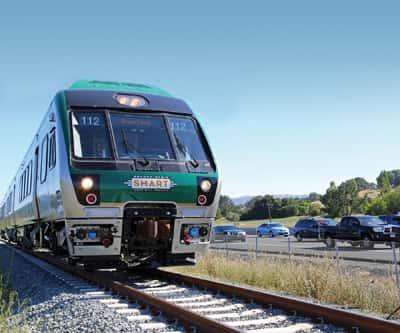If you’re looking for the pin that could burst our region’s economic bubble, it isn’t hard to find: it’s affordable housing.
Anyone who has tried to hire new employees in the past year has already realized that the low unemployment rate we’ve been enjoying (hovering between two and three percent in 2000) has caused a serious labor shortage. Quality of workers was the issue for employers in the 1980s and 1990s; at the beginning of the 21st Century, the issue is sheer quantity of potential employees.
As in other communities – in California in particular – the housing near the job centers are the most desirable, hence the high prices. (An interesting side note: most of California tends to follow the informal "$2000 Per Mile Rule" when it comes to housing. For every mile you get away from the job centers, the same house is $2000 per mile cheaper. That’s why we see people commuting from Modesto to San Jose, Tracy to San Francisco, and Ukiah or Middletown to Santa Rosa. In some cases, the rapid increase in housing costs in Northern California has increased it to the $3000 per mile rule!)
The ramifications of this have to be carefully considered. The creation of any community with a high out-bound commute comes with a societal price tag. When people have to drive 50 or 60 miles or more to work each day, it usually requires leaving early in the morning and returning later in the evening, leaving less time for family. Statistically, it also means less time for people to be personally involved in soccer coaching, little league games, neighborhood associations, city council meetings, service clubs, and all the other elements of an engaged and active citizenry.
It’s not just a loss for the individual doing the commuting; it’s a loss to the community at large.
A look at other parts of the Bay Area provides us with an example of precisely what we don’t want Sonoma County to become. Officials in the Walnut Creek and Concord areas, for example, at one point in the 1990s estimated that nearly 70 percent of their residents were commuters. The South Bay Area, the Peninsula, and the East Bay undoubtedly have high commuter figures as well, judging by their jammed freeways at nearly any time of the morning and afternoon.
So is that our future or do we want to buck the trend? Can we find some new ways to ensure that not only our current workforce, but our own kids as well, will someday have an opportunity to enjoy living in Sonoma County?
Clearly, if we expect to continue enjoying this strong economy and provide places to live it will depend on the private and public sectors developing new approaches to creating housing for our workforce. Do the math: the median price of a home in Sonoma County as of a few months ago was approximately $340,000. (Incidentally, this compares to a median price of $134,000 in 1987.) In our county, the median annual household income – not per person, but per household – is roughly $62,000. Those figures result in this area being ranked as the fifth least affordable place to live in the United States.
So what can be done? Simply put, we need to swallow a giant "reality pill" and look in a more pragmatic and honest way at how we’re going to address the issue of where our workforce will live. Until recently, we’ve become self-delusionary and believe that we can have unlimited open space, restrictions on the number of housing units allowed in our communities each year, urban growth boundaries that encourage primarily city-centered growth . . . and still achieve affordable housing. It truly is a matter of recognizing the laws of supply and demand; we can’t limit the supply of something while the demand remains high and still expect prices to be reasonable. It doesn’t work with other goods and services, and it won’t work with housing.
At the North Coast Builders Exchange, the issue of affordable housing has been identified as one of our organizations’ top priorities. This issue has nothing to do with "contractors paving over Sonoma County." It has to do with teachers, public safety personnel, construction workers, agriculture workers, and other workers not being able to afford to live in the community where they work.
The workers of Sonoma County need available and affordable housing and we need the quality workers living right here in our communities.
Our hope is that the public, private and non-profit sectors take the issue seriously enough to aggressively look for new and different solutions. To begin with, it will certainly take all of us – elected officials, organizations, and the general public – to alter our view of what constitutes "housing." The realization has to settle in that the classic 3-bedroom, 2-bath, 1500 square-foot home on a corner lot may not be possible for everyone in the future. We have to accept higher densities in neighborhoods throughout Sonoma County as one of the only plausible solutions. We have to think of a wide range of other possibilities, including smaller ÒstarterÓ homes, granny units, lofts, downtown housing above storefronts, and possibly making condominium projects less threatening to developers from a legal/lawsuit standpoint.
The bottom line is this: as a community, we have to become more creative than ever before if we hope to achieve our dual goals of maintaining a strong economy while not destroying the high quality of life that attracts and keeps us here. The sprawl that has become so much a part of the landscape in the rest of California is clearly not a popular notion in Sonoma County, and it will take innovation and dedication to prevent it from happening here.
Albert Einstein once said that ÒInsanity is doing the same thing over and over and expecting a different result.Ó Let those words of wisdom be our mantra in the years ahead as we work together.
Rick Anderson is 2000-01 president, North Coast Builders Exchange and owner of RLA Sheet Metal.



